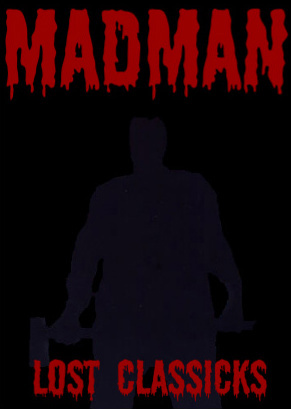
Director: Joe Giannone
Writers: Joe Giannone, Gary Sales
Starring: Alexis Dubin, Tony Fish, Harriet Bass, Seth Jones
By 1981, the slasher craze was in full swing, with the summer camp being a popular location. But repetition was only a minor concern to horror fans, in fact sometimes it was a selling point. Friday the 13th had already been a major success, and The Burning more than satisfied the gore fans. And so a concept like Madman seemed like a safe bet. Based on the Cropsy campfire legend, much like The Burning, Madman would mark the feature debut of independent filmmaker Joe Giannone and introduce horror audiences to a new monster, Madman Marz. All the ingredients were there – a simple backstory, a group of sexually active victims and a host of gruesome effects. So it came as no surprise when drive-ins across America were flooded by teenagers wanting to see the latest slice ‘n’ dice effort. Facing down rivals backed by major studios (Paramount, Tri-star, Warner Bros.), Madman still succeeded through word-of-mouth, perhaps a movie’s most powerful marketing tool, and soon the film gained a cult following, eventually reaching new audiences on home video, resulting in Madman becoming one of the most treasured gems of the genre’s heyday.
In 1979, two wannabe filmmakers began to toy with the idea of making their own feature and, realising that low budget horrors were clearing up at the box office, decided to follow suit and began discussing potential ideas. Joe Giannone and Gary Sales had met at Richmond College and had created several short films, which had fuelled their artistic passion. After witnessing the overnight success of Halloween in the fall of 1978, they discussed the possibilities of making their own movie and looked at their options. Realising that the easiest way to shoot a feature was to base the story in as few locations as possible, Sales remembered the old Cropsy legend which he had heard around campfires as a child and suggested it as a possible basis for their story. Enthusiastic, Giannone and they started to develop the idea, which would soon become Madman Marz: The Legend Lives. As his partner wrote the script, Sales balanced his day job working in an office with the quest of finding an investor, using his employer’s facilities as a base of operations. Eight months and over a hundred attempts later, the two attracted the attention of Sam Marion, who immediately sensed the potential.
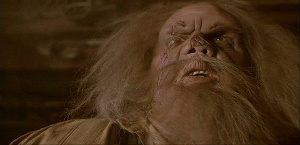
With the idea of Cropsy changed to Marz, a farmer who had massacred his family before a lynch mob sought vengeance and strung him up and mutilating his face with an axe, a deal was set in motion in August 1980, with the filmmakers demanding a front of $20,000, with which they used to rent out office space on 7th Avenue in New York under the banner The Legend Lives . With the summer drawing to a close and the weather rapidly changing, it was pivotal that filming commenced as soon as possible and so the producers began location scouting, initially settling on a horse riding ranch for children in upstate New York, whose owner had expressed interest in investing money into the picture. Eventually bailing, the filmmakers were forced to search elsewhere for a suitable camp, with Giannone’s parents suggesting Fish Cove in Southampton, Long Island, which would provide the director with all of the required locations for the script.
Casting soon commenced with the first role taken being Marz. Paul Ehlers had spent his childhood shooting super-8 James Bond-style shorts and drawing cartoons and comics. In 1979 he had taken a job as an illustrator and had befriended Giannone and Sales, who had begun to seriously consider the film industry as their vocation. His involvement in Madman had originally been to help design posters and artwork for the movie, as well as the opening credit sequence. After providing suggestions on possible looks for the antagonist, a cast was made of his head by effects artist Rich Alonzo. As he was describing to the producer and director how the character could behave, by growling and performing the movement, Giannone and Sales took one look at each other and offered him the part. They had been considering another, much taller, actor but were unimpressed with his movements. Ehlers had trained in martial arts for many years (as well as with weapons, which would be an added bonus) and so had the requirements to play a faceless, silent killer.
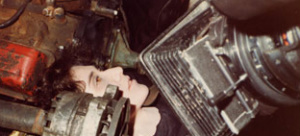
For the role of Max, the middle-aged head counsellor, they had originally wanted to approach screen legend Vincent Price but, with the movie being non-union, felt that the actor would decline the offer. The only recognisable face to grace the film was Gaylen Ross, who had previously starred in the zombie epic Dawn of the Dead and would be cast in Madman under the pseudonym Alexis Dubin for reasons unknown. The rest of the cast were made up mainly of first-timers, as the budget (which Marion was constantly reducing) could not stretch to any real ‘names’ (like Halloween had done with Donald Pleasence and Friday the 13th had with Betsy Palmer). With the casting process coming to an end and the actual shoot looming closer, Giannone continued to rewrite the script, which would only serve as with most slashers as a succession of gruesome set pieces, padded out with generic characters and soap opera-style melodrama. And with a Frank Sinatra tour entitled Frank Sinatra: The Legend Lives being produced around the same time, the filmmakers finally decided to change the name to simply Madman.
It was during production that Giannone and company heard about Tony Maylam’s The Burning, which was also based on the Cropsy murder, meaning that the two films would resemble each other a little too much. Principal photography commenced in November 1980 in Southampton, Long Island, for what was to be all night shoots. As the leaves were starting to turn brown and fall from the trees, the production were forced to find as many as possible and paint them green to give the impression that the movie was set in summer. Fish Cove not only provided a large house to film in but also twenty-five cabins that the cast and crew could stay in. As it was out of season, the filmmakers had to hire out the entire camp, meaning that they now had the run of the place. For the room and board that the complex offered, the crew was changed only twenty-five dollars-per-head, with the staff having to work nights to accommodate for their guests.
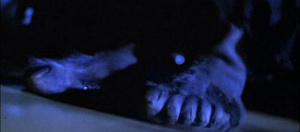
For the opening scene, which sees Max and friends sat around a campfire telling scary stories (also see Friday the 13th Part 2 and, sixteen years later, I Know What You Did Last Summer), actor Tony Fish, who portrayed T.P., was given only one night to memorise the song that he sings in an effort to creep out his fellow counsellors, as the prosthetics for Madman Marz were late arriving on set and the director was forced to rethink his shooting schedule. During this sequence, Max starts to tell the tale of Marz, who butchered his wife and children with an axe, before being executed by the townspeople. The effect of Marz crushing his wife’s skull with the axe was achieved by the makeup artists filling a condom with fake blood and then placing a wig over it, so when the blade was struck down onto the pillow blood would explode everywhere. During the production, Ehlers had been expecting their first child and so Sales had supplied him with a beeper. One night he is informed that she had gone into labour and rushed from the set to the hospital, without changing out of character. Upon arrival, he asked a nurse at reception where he should head to and, believing that he had been in an accident, tried to convince him to make his way to E.R. His son, Jonathan, was born on November 15th 1980 and would one day begin discussions with his father about returning to the character of Marz.
Whilst on set, Sales spent his spare time shooting production stills for press releases, but this relatively simple task almost spelt disaster for the writer. For a scene where Betsy shoots her friend, Ellie, through a window with a shotgun, Sales had been above the camera taking shots himself, when a piece of the breakaway glass fired out and landed between his eyes. Luckily, only being synthetic, the glass did not dig too deeply into his forehead and Sales escaped relatively unharmed. One night there was a strange figure in the woods that various people had claimed to see and, nervous as to who the intruder could be, Giannone asked Ehlers – who was in full Marz makeup – to head into the tress with his axe and look around. He was unable to find anyone and no figures were seen again for the duration of the shoot. On December 8, towards the end of the shoot, filming was abandoned for one day when news came over the radio that singer John Lennon had been murdered in New York. This senseless act, carried out by an obsessive fan, took the entire nation by surprise and so as a mark of respect the killing was put on hold for the day. Madman was released in January 1982 and, as predicted, became a success in the drive-in circuit, before finding a larger audience on VHS where it became one of the most rented slashers of the year. Recently, there has been talk from both Ehlers and Sales that they planned to remake the movie, although sadly Giannone passed away on December 10 2006 from heart failure.
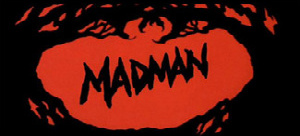

6 Responses to The Making of Madman (1982)